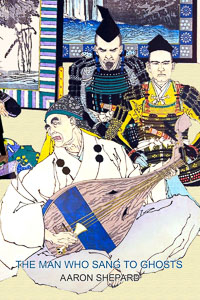Here are the most valuable books and media I found while researching the Japanese epic The Tale of the Heike (Heike Monogatari) and my retelling of its offshoot legend “The Story of Hoichi the Earless” (“The Story of Mimi-nashi-Hoichi”).
Translations
The Tale of the Heike, translated by Helen Craig McCullough, Stanford University Press, Stanford, California, 1988. My favorite translation, for its literary quality.
The Tale of the Heike, translated by Hiroshi Kitagawa and Bruce Tsuchida, University of Tokyo Press, Tokyo, 1975. Another fine translation, with valuable background material. Published in two volumes.
Retellings
“The Story of Mimi-nashi-Hoichi” (“The Story of Hoichi the Earless”), in Kwaidan (“Ghost Story”), by Lafcadio Hearn, Houghton Mifflin, Boston, 1904. Hearn’s retelling from an unknown source is our own primary source of knowledge of this tale.
The Man Who Sang to Ghosts: A Japanese Legend, Retold from the Story of Hoichi and Based on The Tale of the Heike, by Aaron Shepard, Skyhook Press, 2014. My own retelling of the story of Hoichi, drawing from both Hearn and The Tale of the Heike. (The full text can be found on my Web site.)
Background
The Legend of Semimaru, Blind Musician of Japan, by Susan Matisoff, Columbia University Press, Ithaca, New York, 1978. Background on the biwa hoshi, the blind bards who composed The Tale of the Heike and are featured in the story of Hoichi.
Literary and Art Theories in Japan, by Makoto Ueda, Western Reserve University Press, Cleveland, Ohio, 1967. Chapter 8 is on the biwa hoshi.
Media
Kwaidan (DVD), directed by Masaki Kobayashi, Janus Films, 1964, 125 minutes. Dramatizations of several stories from Lafcadio Hearn’s book, including the story of Hoichi. Includes a stylized enactment of the Battle of Dan‑no‑ura, accompanied by the performance of a real-life biwa hoshi!
